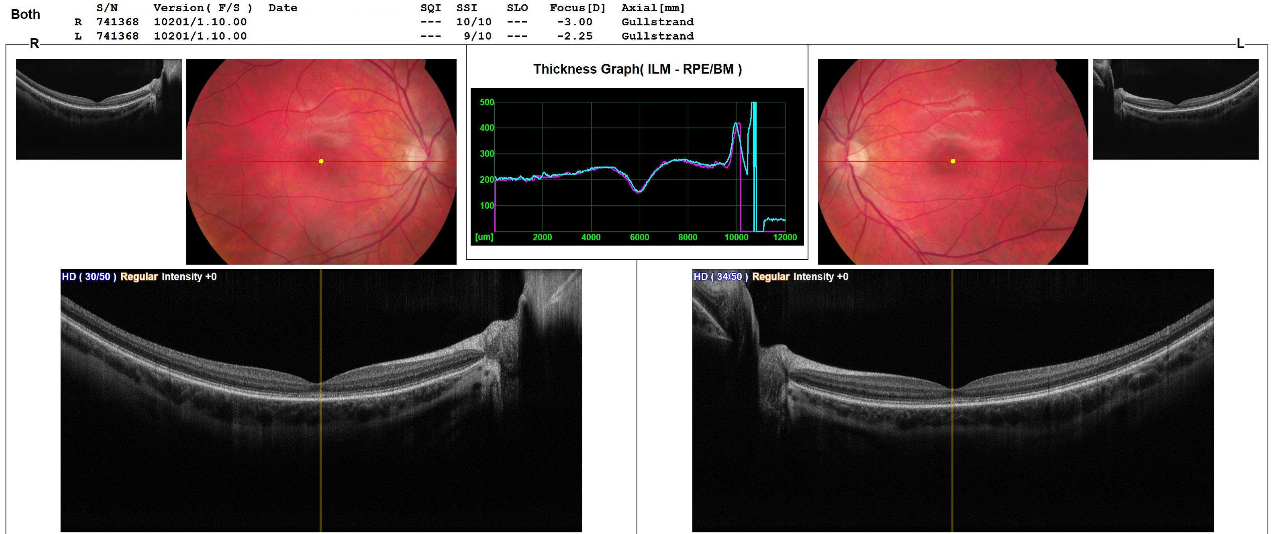For educational purposes only. Please see section 3.3 of our EULA.
User Question/Comment:
This case was submitted anonymously. It is lightly edited for clarity and formatting.
This is a 16 year old male patient who presented with a central scotoma on FDT and BCVA 20/60 in each eye. The OCT demonstrates a blurry ellipsoid zone-photoreceptor integrity centrally. Please offer your opinion on this case.

Dr Lederer’ Response:
What a great case! For many years I was puzzled by this appearance and struggled to understand it. But fortunately with the explosion of OCT-based research we have had substantial clarification on this type of presentation. I know it can be hard to keep up with the literature so let me offer a few reminders.
It all stems back to a presumptive diagnosis. More specifically, my guess is that if you would complete a full history/exam/testing (looking for toxicity and masquerading disease) and perform mf/ffERG testing, that you will end up with the diagnosis of a “cone dystrophy”. I use quotation marks as this is a catch phrase covering many genotypically distinct pathologies but for the purposes of OCT interpretation it will suffice.
Recall that a healthy young person will have 4 discrete outer retinal bands. (1) The external limiting membrane (2) the ellipsoid zone (3) the interdigitation zone (the area where the photoreceptors insert into the RPE) and (4) the retinal pigment epithelium. While in cases of cone dystrophy seen in older life there is atrophy, the findings in young persons early in the disease course are different. More to the point, the loss of the definition of the ellipsoid zone, and more specifically the interdigitation zone, is the most important finding. The OCT appearance presented in this case is a common finding earlier in the disease course of a cone dystrophy and demonstrates exactly what I just described (an alteration in the reflectance of the ellipsoid zone and loss of the interdigitiation zone band).
At EyeCarePD we do not typically discuss the interdigitation zone as it is not a band critical to orienting the entirety of the OCT interpretation. However, as with many discussions, there is always more to it once you dig deep. I am so glad this OCT was submitted so we can begin that discussion today!
Please feel free to drop us an email or use the blue button on the bottom right to send us a note if you would like to hear more about the interdigitation zone. We are always looking to tailor our education to the needs of our learners.